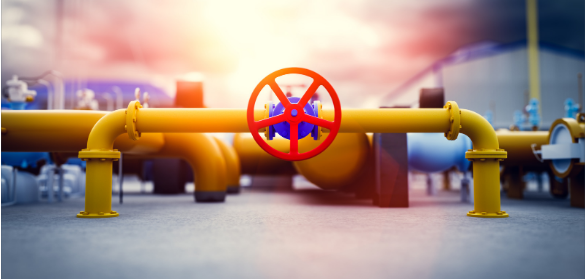
Gas supplies to Europe have already dipped compared to previous years, and while flows typically drop in August, this cut is permanent
Disruptions to gas supply will significantly dampen production among both localized MNCs and other businesses. MNCs should prepare for gas rationing, with governments in the region prioritizing gas supplies to households, vital services, and strategic industries; they will also be required to use excess supply to support more affected European markets if possible. As such, MNCs should monitor the implementation of contingency plans carefully and assess their direct exposure. In the meantime, executives can consider supply-chain diversification through negotiating with suppliers from more resilient or non-EU markets or optimizing their product portfolio to include offerings that are less gas intensive to manufacture to soften the upcoming shock on their business.
Overview
The cut to the Nord Stream 1 flows comes in the aftermath of previous cuts to transit gas coming via Ukraine and significant cuts to physical flows via the Yamal pipeline to Poland. While citing technical reasons, Gazprom’s 65% cut to European gas flows is likely a retaliation for the EU’s recent oil embargo against Russia. LNG imports rose significantly in Q1 2022, reaching 12,300 mcm in March 2022 from 8,100 mcm at the end of 2022, but ongoing disruptions and lack of infrastructure mean the increase in imports will not offset the cut to Russian inflows. Germany has triggered stage two (of three) of its contingency plan relating to gas supply shortages, and other EU nations are preparing their economies for upcoming gas shortages over the winter months.
Our View
Gazprom’s gas cut via Nord Stream 1 by around 60%, which led to an overall 65% drop in gas flows to Europe compared to the historical average of 2017–2021, and the earlier cuts to Poland, the Baltics, and Bulgaria will make achieving the EU’s objectives impossible. The EU has made significant progress in refilling existing gas storage capacity to a seasonally elevated rate of 54.8% by June 17, 2022, with the goal of reaching 80% by October 1, 2022 seemingly within the bloc’s grasp. However, while Gazprom continues to cite technical issues, it is clear that Russia will not increase gas supplies to Europe and, in fact, will likely introduce additional cuts as it aims to inflict more pain on the West. As such, existing gas supplies and higher LNG imports will not be enough to offset the loss of Russian gas supplies and will necessitate that EU governments begin to introduce gas rationing measures throughout Q4 2022. The stringency of the measures will vary throughout the EU, with some markets, such as Spain, France, and the UK, considerably more resilient to the cuts. The upcoming measures will weigh on total output across the EU and likely drive markets throughout the bloc into a contraction in H2 2022, leading to a notable drop in both consumer and business demand. While our base case assumes that Russia will maintain gas exports to the EU, albeit at a significantly reduced volume, measures considered by the EU, such as a price cap on wholesale gas, may easily trigger a downside scenario, in which Russia suspends all gas to Europe, leading to a much more pronounced contraction in the upcoming months.
At FrontierView, our mission is to help our clients grow and win in their most important markets. We are excited to share that FiscalNote, a leading technology provider of global policy and market intelligence has acquired FrontierView. We will continue to cover issues and topics driving growth in your business, while fully leveraging FiscalNote’s portfolio within the global risk, ESG, and geopolitical advisory product suite.
Subscribe to our weekly newsletter The Lens published by our Global Economics and Scenarios team which highlights high-impact developments and trends for business professionals. For full access to our offerings, start your free trial today and download our complimentary mobile app, available on iOS and Android.

